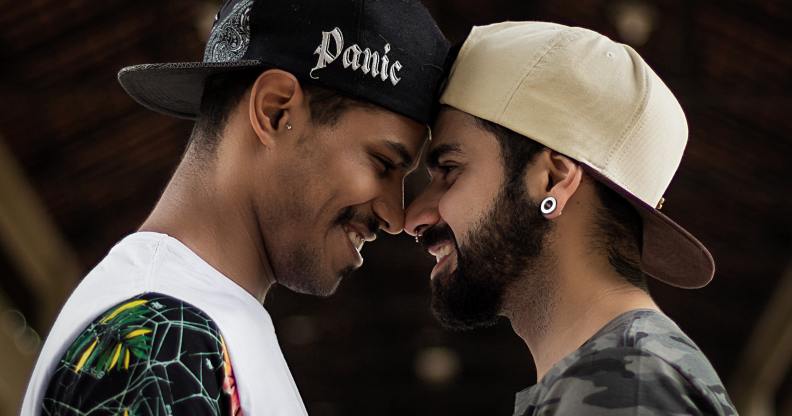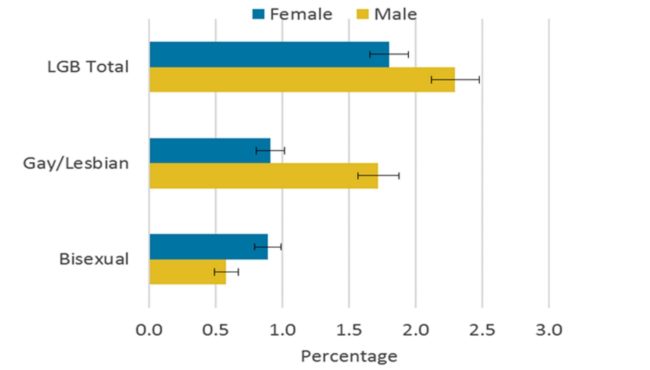LGBT statistics: The proportion of straight people in Britain has fallen

The ONS’s LGBT statistics have shown a lower proportion of straight people in Britain than ever before (Pexels)
There is a lower proportion of straight people in Britain than there has been since the government started releasing LGBT statistics.
The Office for National Statistics (ONS) revealed in its 2017 release on Monday (January 21) that 93.2 percent of people identify as straight.
This percentage is down from 93.4 percent last year, and 94.4 percent when the first figures were collected in 2012.
The data, which comes from the government’s annual population survey, also shows that two percent of people in Britain are lesbian, gay or bisexual, which equates to around 1.1 million people—the same proportion there was in the 2016 release.

The statistics showed that more men than women defined as queer in 2017 (Office for National Statistics—Annual Population Survey)
Respondents aged between 16 and 24 were more than twice as likely to identify as LGB, with 4.2 percent doing so.
This age group also had the highest proportion of people who defined their sexuality as “other,” at 0.9 percent, and who either refused to confirm their sexual orientation or said they didn’t know, at 5.3 percent.
This meant that less than 90 percent of 16 to 24-year-olds defined as straight.

The number of straight people is falling, especially among the youth, according to these LGBT statistics (Pexels)
It was only among this younger age range that females made up a bigger proportion of the queer community than males, by 4.7 percent to 3.7 percent.
Overall, 2.3 percent of males identified themselves as LGB, compared to only 1.8 percent of females.
London had the highest proportion of openly LGB people, at 2.6 percent, with just 1.5 percent of respondents in the East and North East saying they were queer.
Just 1.2 percent of people in Northern Ireland, the only part of Britain where same-sex marriage is not legal, put themselves down as LGB.
LGBT statistics accused of underestimating queer population in Britain
Stonewall’s director of campaigns, policy and research, Paul Twocock, told The Guardian that the statistics could not be seen as fully accurate.
“LGB people still aren’t able to be open about their sexual orientation with friends, family and colleagues”
— Paul Twocock
“LGB people still aren’t able to be open about their sexual orientation with friends, family and colleagues,” said Twocock.
“We know that only half of lesbian, gay and bi people (46 percent) feel able to be open about their sexual orientation to everyone in their family, and nearly one in five LGB people (18 percent) aren’t open about their identity with anyone at work.”
He continued: “We’re pleased the government plan to include questions on sexual orientation and gender identity in the 2021 census, which will give an even more reliable indication of the size and location of the LGBT population in the UK.”
Chris Ramsay, the chief executive of Sunderland Pride Group, spoke about the fear of coming out among queer people in the north east in his comments to The Guardian.
He said: “A lot of people round here are scared to come out. We do have a lot of people who come in here who don’t want to come out… a lot of younger people.
“Some don’t want their friends to know they are gay. It’s still rife up here, that sort of thing.”
Ramsay said the statistics may reflect LGB people’s desire to leave the north east for more accepting areas.
“A lot of people round here do move to Leeds or Manchester to get away,” he explained.

